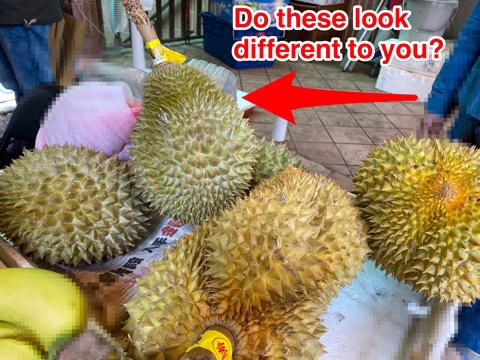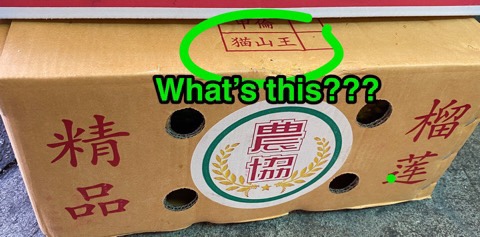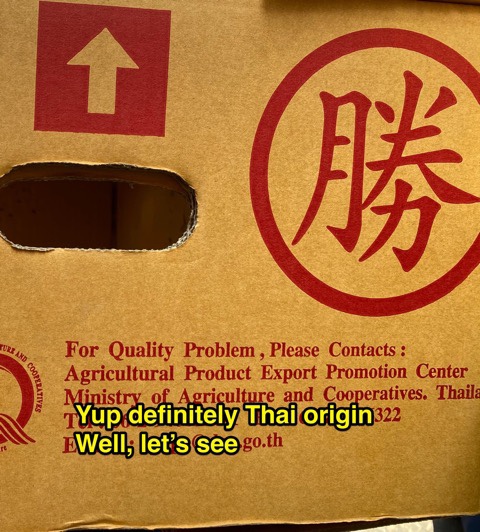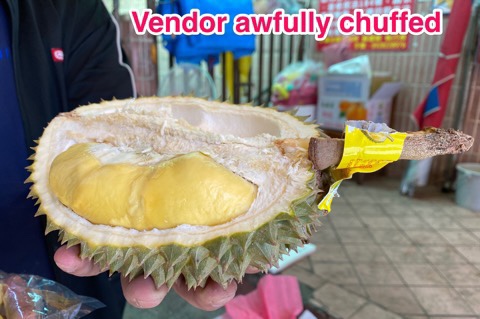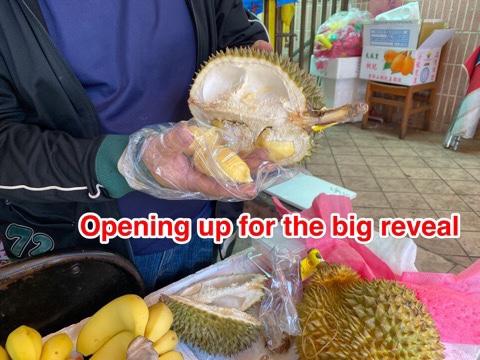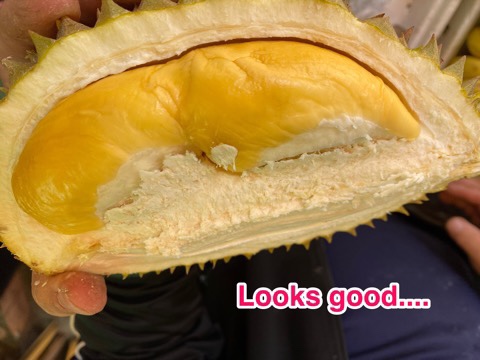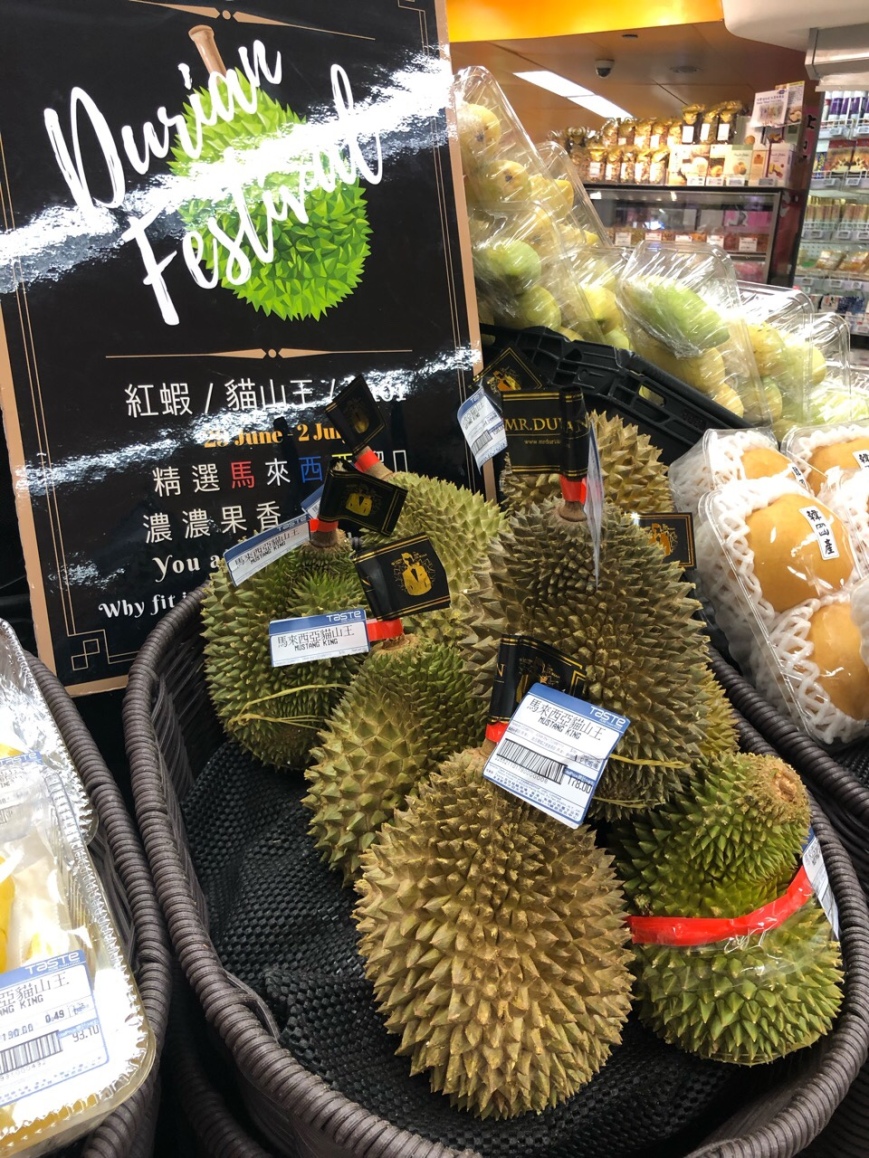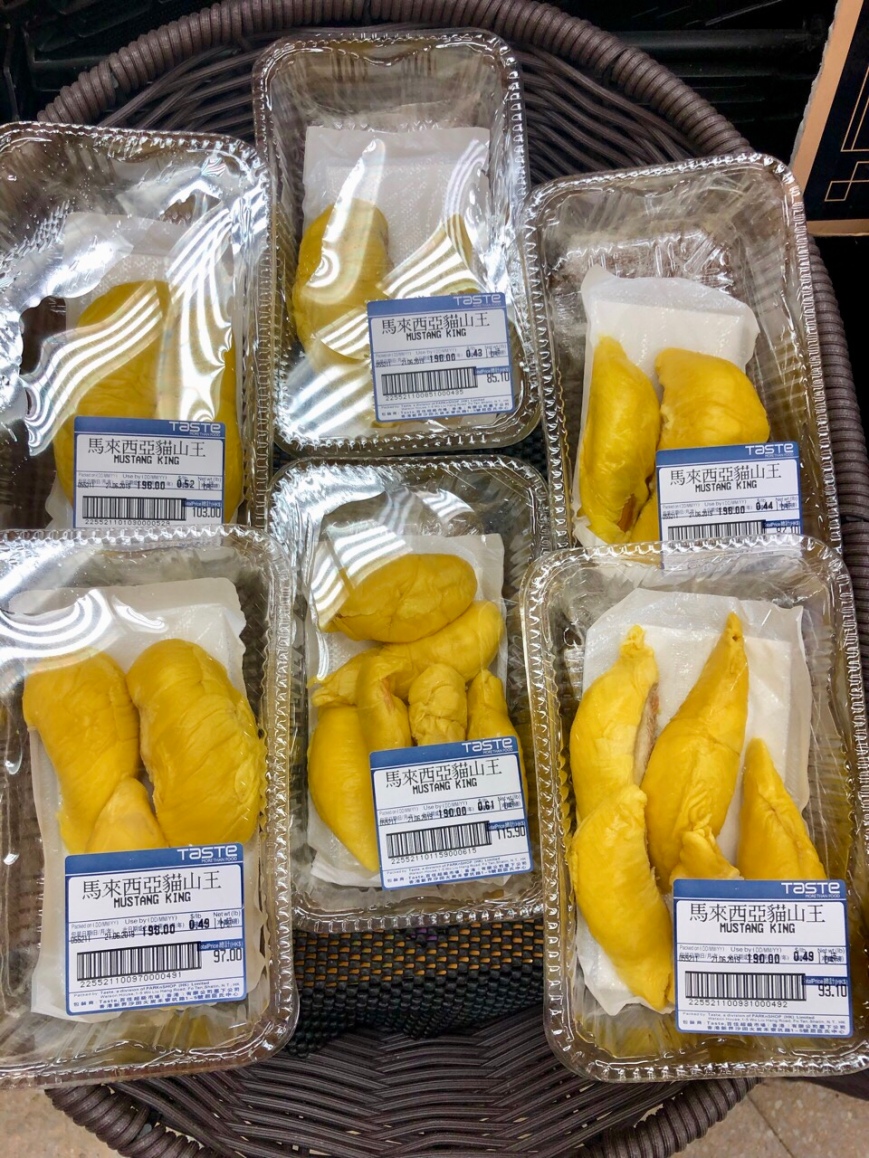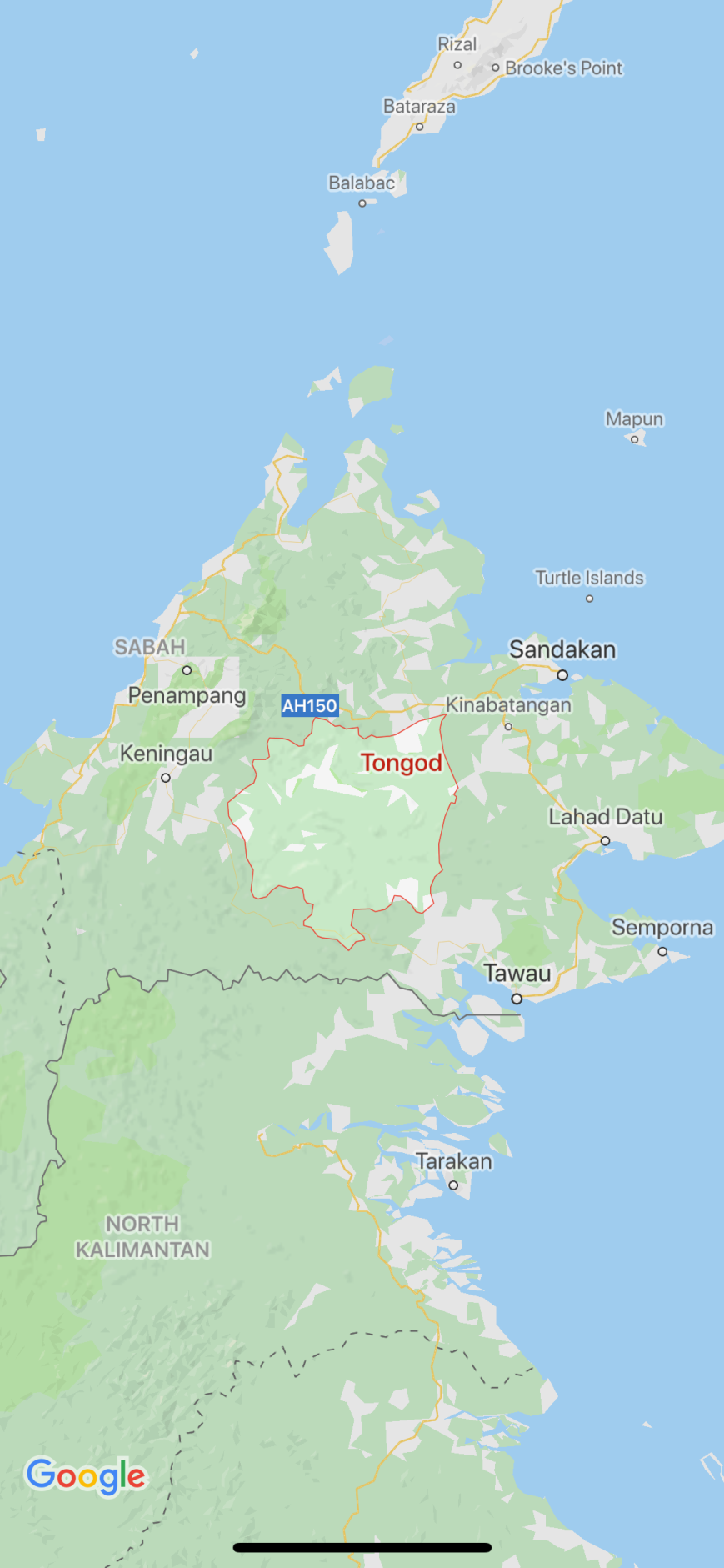I invited M&A over once I brought the durian home. I couldn’t wait to share my bounty (wouldn’t you like to be my neighbor?). But as it was all a bit last minute, only M could come as A had another appointment. Very well, all the more for the rest of us.
The durian had been at room temperature for a few hours after the purchase, payment and pickup, all because I had an appointment at Louisa Coffee which I couldn’t miss. The fragrance was beginning to escape the bag and out of courtesy to the other clients of Louisa Coffee, I hung it outside the glass side door. Still within visual range but not within nasal olfactory range. Not that I needed to worry too much, the coffee shop was well ventilated and generally smelled of… coffee.
That evening, when M came over, I pulled the durians out of the fridge.
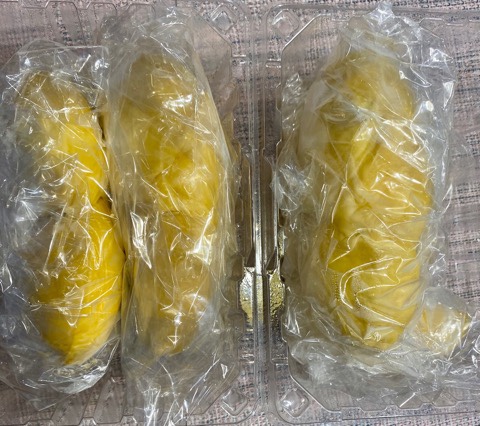
Each segment in its own bag
“Taaadaaa” I said with a flourish, putting the bag of stinky fruit on the table.
M’s eyes pretended that she was only moderately interested but I could tell from the way she sat down that it was heavy with expectation. She then proceeded to tell me that she’s never had anything but Thai durian and she wasn’t able to tell the difference between a mao shan wang or anything else.
When I untied the top of the bag, the immediate gaseous escape of the distinct aroma flooded the room. If there was a way to colour the aroma we would have seen purple and orange swirls reaching out like growing tendrils searching for the next branch to cling on to.
I’d give it about 7/10 for satisfying smells. Now came the other sensory stimuli… the visual, the taste, the texture on fingertips.
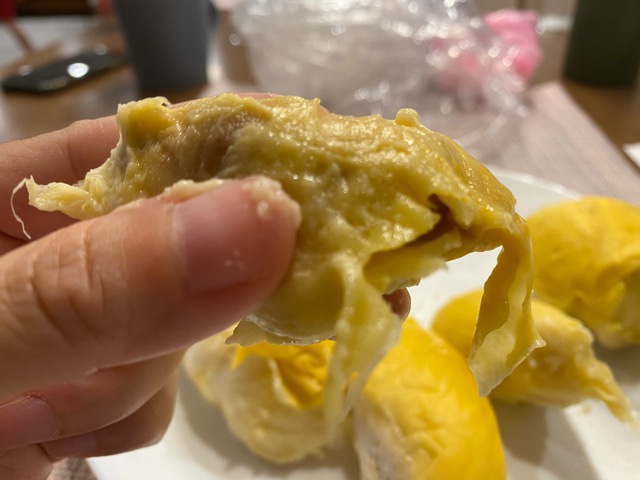
A little bit too mushy
Unpacking the durian was a coordinated effort. We each grabbed a bag and rather unceremoniously rolled the fruit out onto a waiting plate.
We started with the durian with a little less colour and scent. It was… very dull…. almost as if the flavour of it was just a durian that was unripe. So what do you do? a) Force yourself to eat it or
b) Move to the next one
Tell me your answer in the comments below please.
Me: I’ll have one more seed and then move onto the next.
SW: I’ll just try the other one right now…
M: I think this one is not bad actually…
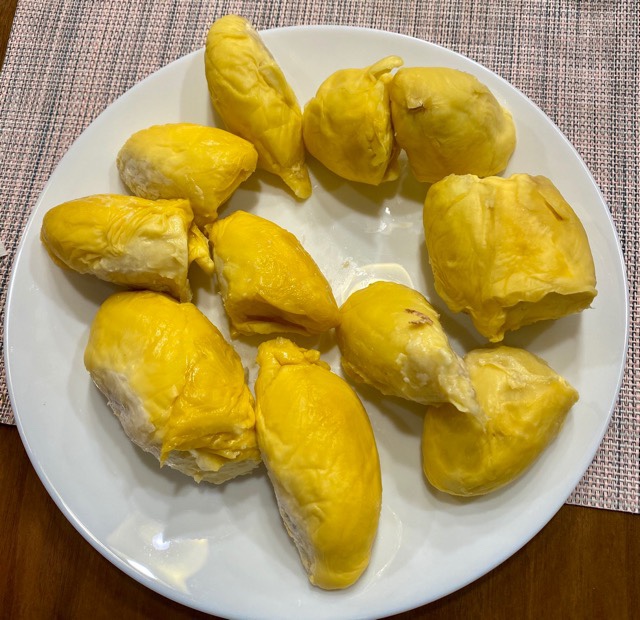
Can you distinguish the shade difference between the two?
The more intense yellow of the two durians did have better texture and a more robust flavour. But it was still nothing compared to the Malaysian musang kings. The seeds were also not quite flat and deformed enough to convince me that it was the right hybrid. It was more like a not so great D24.
Well, you can try fooling the chinese market but let’s see how long for. As a friend in the fermented grape juice biz told me…like good wine, you always need cheap, so-so quality wine to break into the nascent market. Then cash in on the desire to upgrade to the next level.
